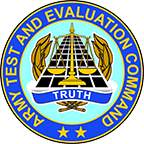- Homepage >
- Facilities
Facilities
EPG is the Army's Command, Control, Communications, Computers and Intelligence (C4I) Developmental Tester headquartered at Fort (FT) Huachuca, Arizona. EPG conducts bench tests, lab tests, field tests, and large-scale, geographically distributed systems of systems tests. EPG employs a mix of live and simulated instrumentation and assets.
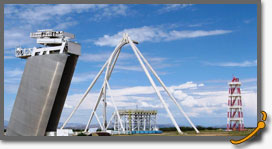
The Antenna Test Facility
The Antenna Test Facility (ATF) measures the electrical performance of antennas either as a “stand alone” configuration or when mounted on ground or air vehicles. Sprawling over approximately 300 acres, the ATF is composed of five main components:
- Arc Range
- Low Observable Tower
- Two Turntables
- Compact Range
These assets provide Radio Frequency (RF) testing capabilities for conducting specialized test of direction finding, emitter identification, other RF signal processing systems, and Far-Field antenna testing.
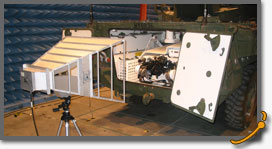
Electromagnetic Environmental Effects Test Facility
The Blacktail Canyon Electromagnetic Environmental Effects (E3) Team applies over sixty years of combined E3 experience to testing equipment in early research and development through deployment and system modification stages. Our personnel are certified TEMPEST Professional Level II and the National Association of Radio and Telecommunication Engineers (NARTE) - Electromagnetic Capability (EMC). They conduct and evaluate Electromagnetic Interference (EMI), Electromagnetic Capability (EMC), and TEMPEST tests on sophisticated electronic equipment and systems. Problem areas are investigated and solutions determined. The E3TF is the Army's TEMPEST tester. The Blacktail Canyon E3 Team is also available as technical consultants to project managers, to review and/or monitor tests and test documentation.
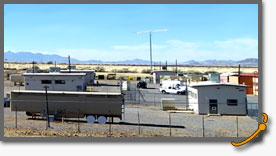
Communication Systems and Networks
The CS&N (Communication Systems and Networks) provides a relevant environment to assess legacy, current force and future technologies. The CS&N plans, conducts, analyzes and provides a venue for technical tests of systems. This includes C4I systems and SoS. The CS&N has expertise in testing a wide variety of radios and networks for many military program managers (PM) such as WIN-T, GMR, HMS, SINCGARS, and JCR/FBCB2.
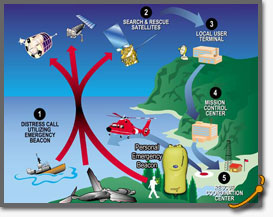
COSPAS-SARSAT
COSPAS-SARSAT [Cosmicheskya Systemya Poiska Avararihich Sudov (Russian for “Space System for the Detection of Vessels in Distress”) – Search and Rescue Satellite Aided Tracking] is an international, humanitarian satellite based search and rescue system. The United States (U.S.), Canada, France and Russia developed the system in 1979; it became fully operational in 1984. Currently, 29 countries are involved with the operation and management of the COSPAS-SARSAT system with 26 Mission Control Centers (MCC).
The U.S. Coast Guard, the National Oceanic & Atmospheric Administration (NOAA) and the U.S. Air Force (USAF) operate COSPAS-SARSAT in the U.S. with technical support from the National Aeronautics & Space Administration (NASA). The EPG at FT Huachuca, AZ is the emergency beacon certification facility in the U.S. In fact, it is the only certification facility in the Western Hemisphere.
All certification testing conducted at EPG is in accordance with COSPAS-SARSAT specifications. Beacon certification tests may include but are not limited to: Class I/II Environmental, Operational, Antenna, Satellite Qualitative, and Navigational. EPG is the all-inclusive COSPAS-SARSAT Certification Facility.
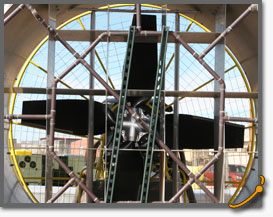
Environmental Test Facility
The Environmental Test Facility (ETF) conducts tests based on the whole life-cycle process in simulated environments. Complete climatic and dynamic testing capabilities are available for testing to military and other environmental standards. The ETF is adequately equipped with a variety of test support equipment to monitor all test variables to provide real-time or post-test analysis. Instrumentation and climatic chambers with capacities from 2 to 5,830 cubic feet (ft³) support these capabilities.
The ETF can meet all the requirements called out in MILSTD- 810 and DO-160 with few exceptions. Conditions are precisely controlled and are 100% repeatable. Environmental subject matter technical experts are available to travel to and assess commercial contractor facilities and test chambers for capability/suitability of performing required first article acceptance tests.
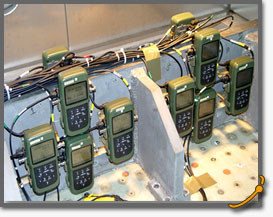
Global Positioning System Test Facility
The Global Positioning System (GPS) Test Facility performs a variety of testing using the GPS Instrumentation Suite (GPSIS) and specialized data collection and data reduction and analysis tools. Fort Huachuca's 80,000 acres of test range allows personnel to conduct testing in a variety of real world environments to include desert, canyon, and mountainous terrain, with or without foliage.
We also support differentially corrected GPS data providing position accuracies in the sub-meter range, as well as producing truth data during tests. With over 20 years of GPS test experience, EPG is well known and respected in the GPS Test community. We are members of the GPS Wing's GPS Test Center of Excellence, Satellite Simulator Control Working, Joint Test Agency Working Group and Army Integrated Product Team. The GPSIS provides flexibility in testing receivers by providing operational control of dynamic and repeatable scenarios in a low cost laboratory environment.
Interagency Telephone Laboratory
The Interagency Telephone Laboratory is part of the U.S. Army Electronic Proving Ground’s E3 Effects Test Facility (Blacktail) at Fort Huachuca, where the Army has tested Intelligence and Electronic Warfare technology for over 60 years. The National Telephone Security Working Group (NTSWG) has selected the U.S. Army Electronic Proving Ground’s Interagency Telephone Laboratory as the only certifying laboratory for telephones and systems used in a secure environment.
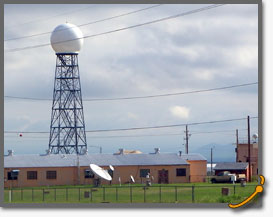
Meteorological
The mission of the EPG Meteorological (MET) team is to collect, archive, and analyze weather information to support military and civilian test operations. The team provides climatology, daily forecasts, radar weather, watch/advisory/warning notifications, and upper air data for EPG planners, testers, and post operations. Services consist of test planning, test support (forecasting, meteorological measurements, and atmospheric characterization), test analysis, and test data reports.
Distributed Software Testing and Integration Laboratory
The Distributed Software Testing and Integration Laboratory (D-STIL) located at EPG Headquarters in Ft. Huachuca provides Software Testing, Verification and Validation (V&V), and System Integration services to EPG customers.

Orion/T2D2 (Test Technology Design and Development)
T2D2 provides advanced technology development capabilities that significantly enhance the effectiveness of EPG’s testing operations. The laboratory supports Test Officers by integrating and synthesizing innovative technologies that are not otherwise available, enabling solutions tailored to the complex demands of testing cutting-edge Command, Control, Communications, Computers, and Intelligence (C5I), Electronic Warfare (EW), and Assured Positioning, Navigation, and Timing (APNT) systems. These systems are often geographically dispersed and must operate reliably under extreme environmental conditions.
Capabilities:
- Circuit design utilizing embedded processors
- Schematic capture and design
- Printed Circuit Board (PCB) design, layout, assembly, and fabrication
- Custom cable fabrication and testing, including RF, Ethernet, USB, and Serial interfaces
- Electromagnetic Compatibility (EMC) emissions compliance testing and validation
- Microscopic inspection of circuit boards
- 3D CAD/CAM modeling and simulation
- Design and development of ruggedized enclosures and fixtures
- 3D printing design and prototyping
- Powder coating services
- Low-pressure injection molding
- Rapid prototyping and fabrication
- Firmware and software development

